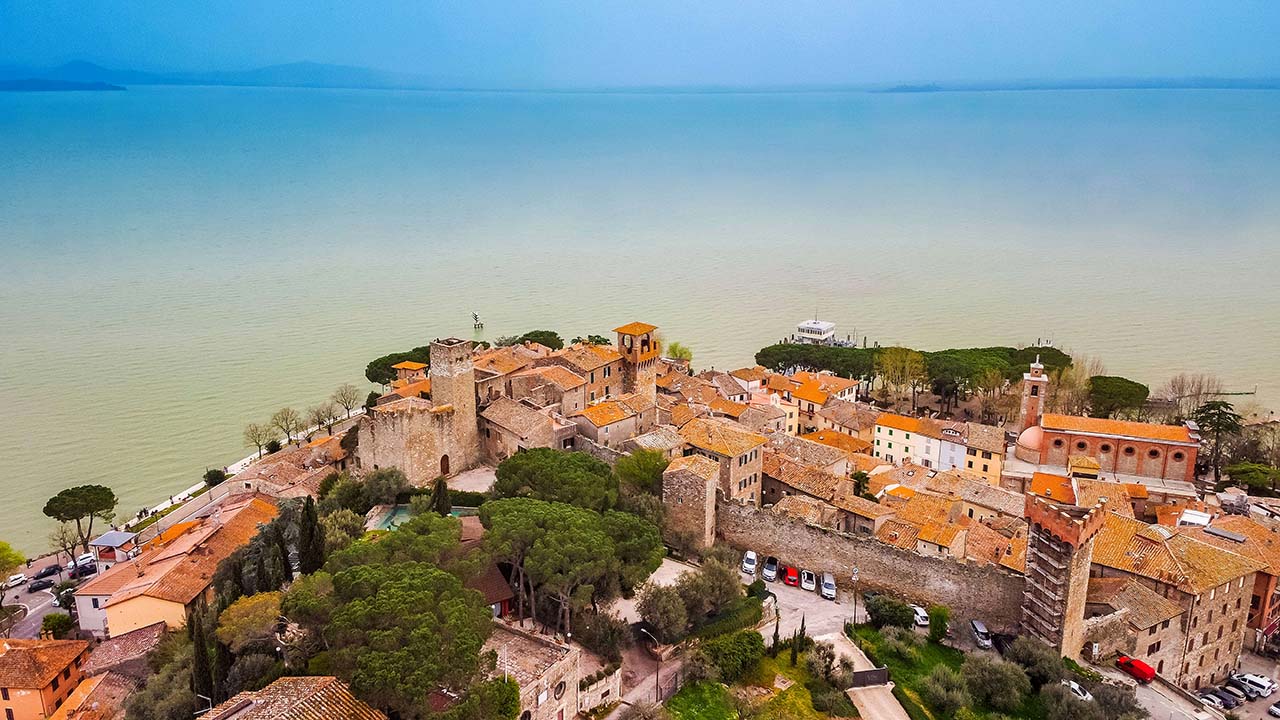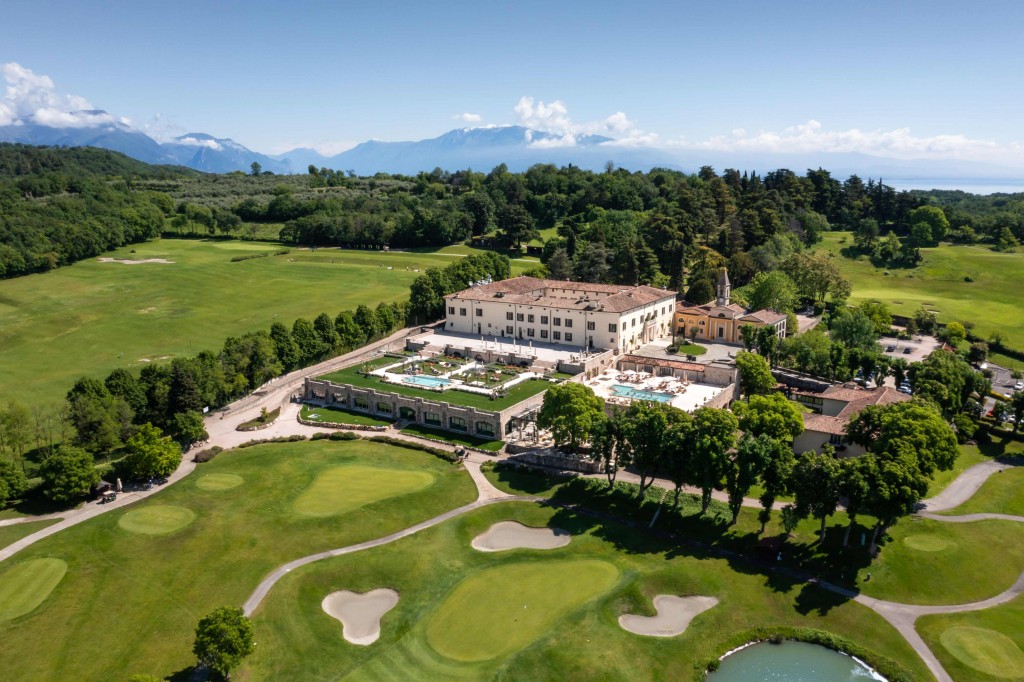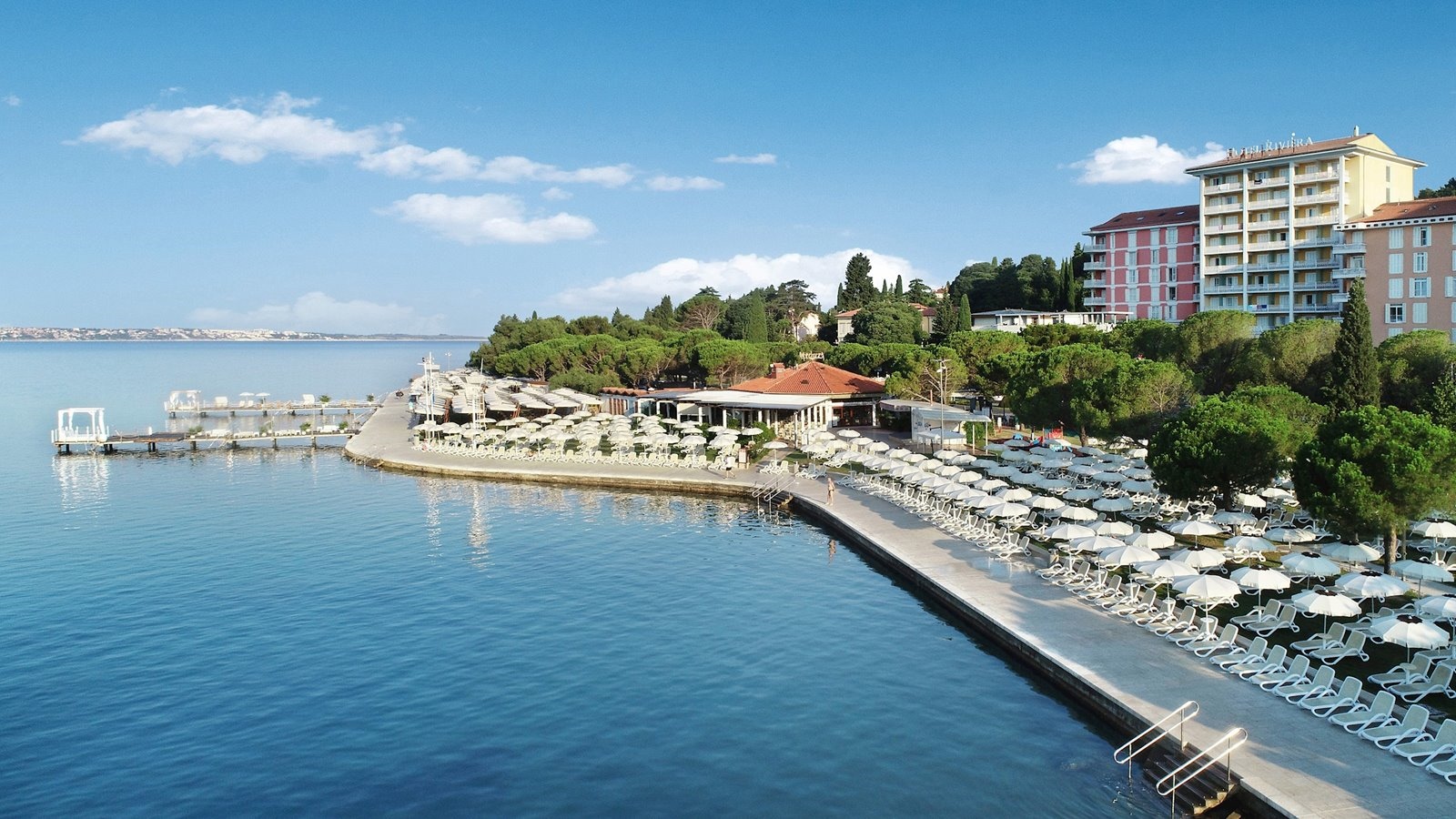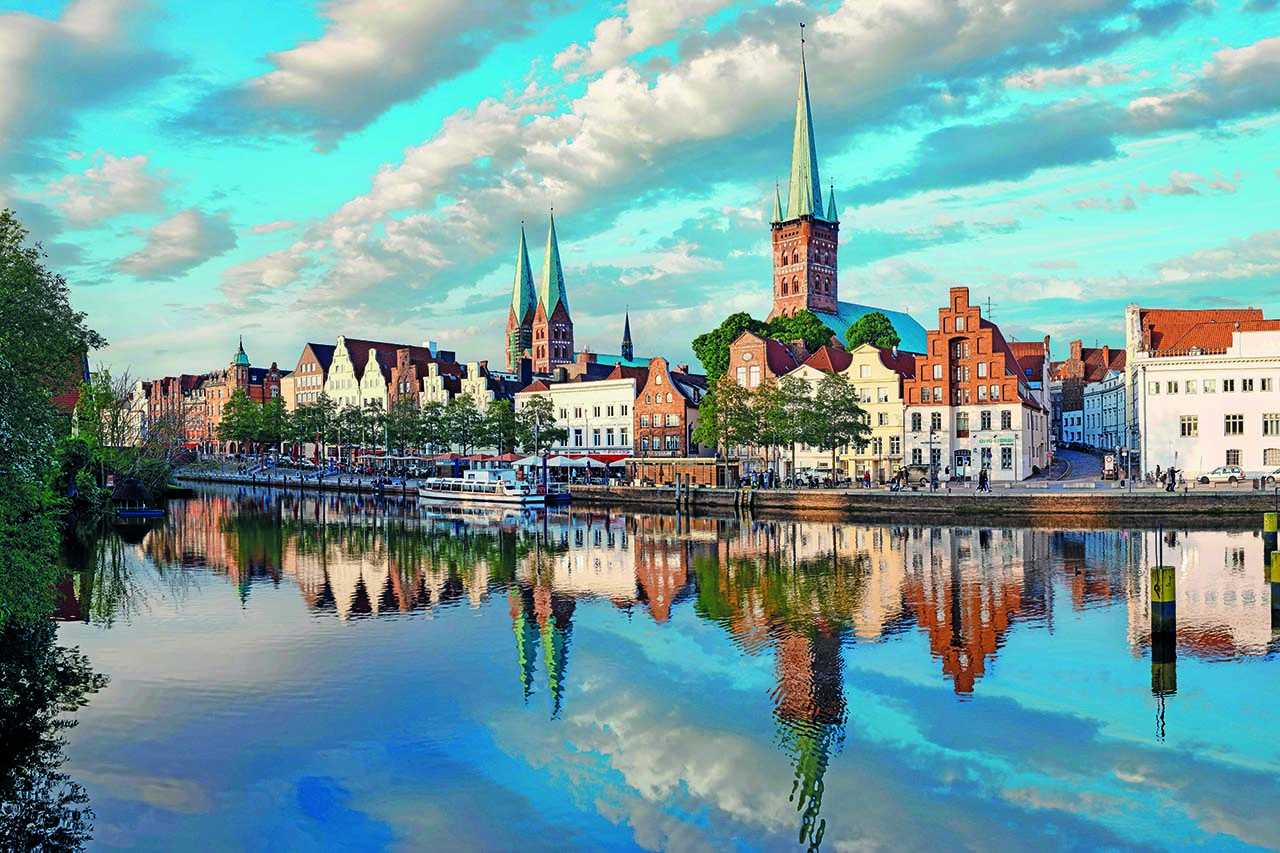A body of water that resembles a silver veil between thick hills and three green islands lit by moonlight. A naturalistic painting that has fascinated poets, painters and travelers over the centuries. THE Lake Trasimeno is ready to return to the scene. The ancient trades – including fishing – but also the craftsmanship of the wonderful villages, the immediate hinterland to discover and the delights of the table trace an itinerary where the wonders of the past are projected onto tomorrow.
Lake Trasimeno Itinerary
The Trasimeno Fishermen’s Cooperative San Feliciano


HAS Mont du Lacon sunny days, is a continuous play of light and shadow. The dark walls contrast with the blue of the “Umbrian sea”, which we can always see among the steep streets to follow, letting ourselves be carried away by the inspiration of the moment.
A few kilometers from here is the fishing village of San Feliciano. It's called the “land of sunsets” and it's easy to see why when the lake water turns fiery oranges and reds.
The actions, on the eastern bank of the Trasimeno, have always been the same, since the dawn of time: the nets are deployed, the fish arrive, the nets are emptied and the catch is brought ashore to be able to sell it but, above all, to cook . And every day, as long as the weather is good, it's the same ritual for three thousand years.
Today there are around thirty professional fishermen, most of whom join the Trasimeno Fishermen’s Cooperative. The average age has fallen considerably, from 65 to 35, and if once the fisherman, in most cases, was already a grandfather, today he is barely a father.
Eros Telatin, 37, is part of the new generation of those who sail this body of water every day. “We work a lot and it takes a lot of effort,” he says as he moves the nets with his expert hands like a tribal dance. “Sometimes I only take one day off a month, but the feeling of freedom this job gives me is truly priceless. »
Royal perch, carp, catfish, milkfish, tench, eel and capitone are the fruits of traditional fishing, presidium of Slow Food, which are processed in the laboratories of the Trasimeno Fishermen's Cooperative into delicious pâtés, burgers and sauces.
To know the secrets of the lake, you can visit the Fishing Museum, with the new multimedia configuration, but also play the role of a fisherman for a day and Holy Archangel of Magione go for a joke fishing tourism.
Or be accompanied in the middle of the lake while you sip an aperitif, strictly based on fish. Lunch or dinner is characterized by typicality: the Trasimen Fisherman's Inno is managed by the Cooperative and the best of the local fish tradition arrives on the table, prepared with a contemporary touch: gnocchi with smoked tench, perch skewers, the essential frying and two ancient recipes like carp in porchetta and tegamaccio, lake fish soup with tomatoes and onions, prepared in the casserole where it must cook for at least five hours.
READ ALSO: Perugia: what to see and where to go


Boat tour of the islands
“You know Trasimeno from the inside, from the water,” is the mantra of the inhabitants of these banks. And then we get back on board, this time on a ferry. From San Feliciano we aimPolvese Island, which hosts a majestic reed bed, populated by various aquatic birds, a place for lovers of the wildest nature.
After reaching the tip of the island, you enter a forest then emerge into the Aquatic plant gardenwhere the eye is captured by a series of rock pools in which water lilies, lotuses and water lilies flourish.
We leave again Castiglione del Lagoa splendid village also part of the Lake Trasimeno Regional Parkbefore moving on toMajor island. The powerful medieval walls of the village reveal the water framed by olive trees and cypresses.
Here they deserve a stop Church of San Michele Arcangelo and the Lace Museumwhere the mastery of the island's lacemakers is demonstrated, who have passed down the making of Irish lace for more than a century.
Trasimeno Glamping Resort
We then return by the East Coast road for a trekking in the naturalist oasis of La Vallein San Savino. The walk takes place between reeds and old paths in a varied ecosystem. A wooden footbridge allows you to enter the lake world to observe birds and immortalize the red herons, night herons and bitterns that inhabit this wetland. A few minutes and you arrive in Magione.
Here, on a six-hectare estate, is the big novelty for summer 2024, a glamping resort for lovers of outdoor holidays, with all the comfort (view included). With latest generation mobile homes, safari tents, lodges, campsites with direct access to the lake, the beach and the pier, the Trasimeno Glamping Resortof the Vacanze col Cuore Group, is completely car-free and the raw materials for the gastronomic offer of the restaurants and bars come largely from local producers.


The village of Panicale
As you head south, you come across villages that are experiencing a return to their former splendor. Panicthe orange flag of the Touring Club, stands on a hill, 430 meters above sea level, with Monte Petravella on one side and Trasimeno, still visible, on the other.
Entering through Porta Perugina, you immediately arrive in Piazza Umberto I, where the imposing travertine fountain dominates. You then go down the narrow streets of the medieval center until Cesare Caporali Theatera treasure chest that can accommodate only 150 spectators, then Church of Saint Sebastian, which houses two masterpieces: the fresco of Martyrdom of Saint Sebastian of Perugino, who was born and raised in these lands, and the Madonna enthroned with musical angelsattributed to Raphael. Just outside Porta Fiorentina, the Tulle Museumdedicated to the ancient art of lace and installed in the ancient church of Sant'Agostino.
A gourmet stopover is essential Lillo Tatinia family tavern which is celebrating its 25th anniversary at this time. Around twenty seats on a flowered terrace, where Patrizia's hands knead coarse tagliatelle, ready to accommodate sumptuous ragù. To taste: Peruvian carbonara: ravioli stuffed with quail eggs, sautéed with Cinta Senese bacon and salty ricotta from Norcia (Slow Food presidium), but also pigeon alla todina, truffle, legume soups, game and fish from Trasimeno, seasoned with smiles and authenticity. .
The walk continues to Piazza San Michele Arcangelo, where the baroque collegiate church is located, and finally to Piazza Masolino, at the top of the village, with the Podestà Palace and the high bell tower which stands out from all points of the valley.
A few minutes by car from Panicale, among olive trees and sunny hills, you arrive at a residence from 1780, immersed in a 72 hectare estate, today transformed into a charming coaching inn. Villa Monte Solare it is the place where the mind and body are regenerated with yoga sessions in the park, Spa treatments and Watsu, water-shiatsu massages, which exploit the relaxing power of hot water.
Those who also want to get their hands on and learn the ancient recipes of Trasimeno and the Umbrian tradition will be able to participate in the village's cooking classes, where local black truffles and PDO extra virgin olive oil, produced by the 2800 olive trees of the area, are not lacking in Certaine.
SEE ALSO: 20 villages in Umbria that you absolutely must visit


Town of Pieve
Another stopover in the hinterland. HAS Town of Pievehomeland of Perugino, you get lost in a maze of red brick streets, while the belvederes offer poetic views of the Trasimeno valley. There Cathedral of Saints Gervasio and Protasio it preserves precious frescoes, including one Virgin and Child of Perugino.
While walking, you come across the Corgna Palace, THEOratory of Santa Maria dei Bianchiwhich hosts theAdoration of the Magi, always of the “divine painter”, the Casalino Well and the House of Peruginolocated between Piazza del Plebiscito, formerly a public square, and Via Roma.
The reign of tradition at the table here bears the name of Bruno Coppettaa trattoria opened in 1965, where you can taste grilled meats, hand-pulled umbricelli seasoned with truffles or rustic ragù and specialties made from saffron grown in the fields surrounding the center.
Returning to the shores, you arrive at the Etruscan promontory of Castiglione del Lago, where you can visit the Rock and the Castle of the Lionsconnected to Corgna Palace through a long and suggestive passage.
The stop is at one of the many traditional taverns, where you order brustico, local fish roasted over embers made from lake reeds, duck umbrellas and Trasimeno bean soups, another presidium of Slow Food.


Tuoro and Passignano sul Trasimeno
Continue to follow the north shore: a Tuoro on Trasimeno, the walk leads to the Stonehenge of Punta Navaccia, the Campo del Sole Parkan open-air museum with modern sculptures that recall the ancient battle between the Romans and Carthaginians.
At the northeast end of the lake, that's it Passignano sul Trasimenowith the fishing boats lined up with the medieval fortress in the background. Walks along the lake offer moments of pure contemplation.
A visit to the little one Boat Museuminside the Rock, and finally the ascent of the 30 meter tower, where the eye is captivated by the silver of this body of water also praised by Lord Byron.
READ ALSO: A heart of water in the greenery of Umbria: Trasimeno, lake of wonders



